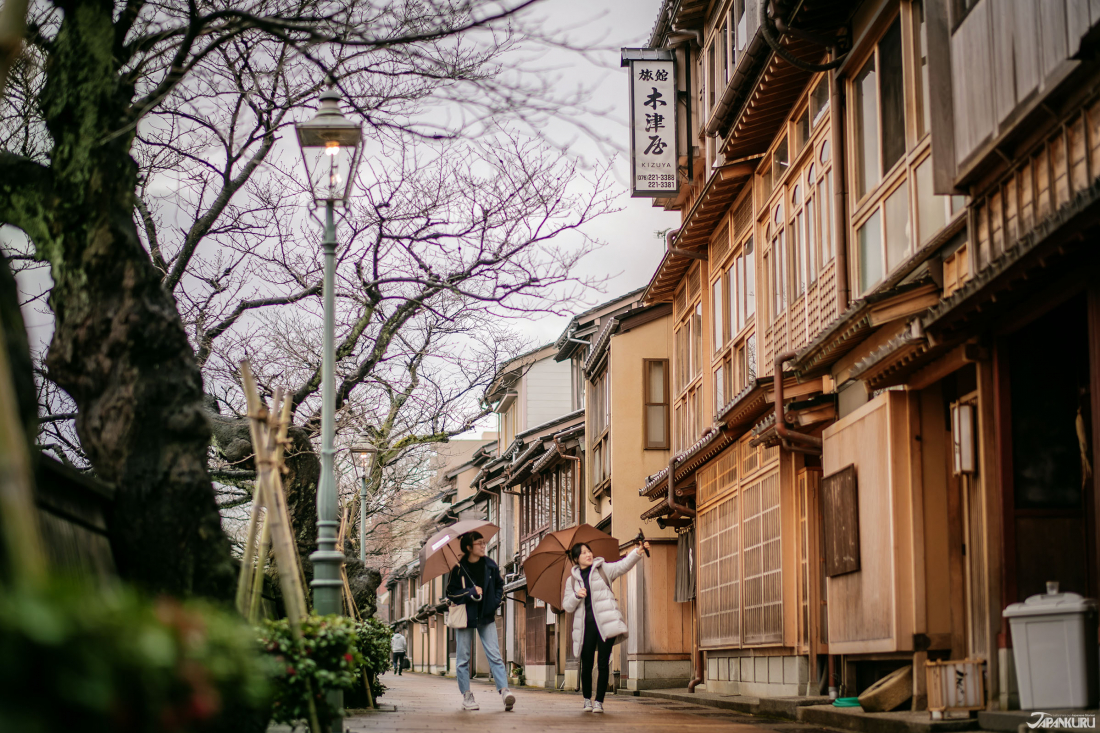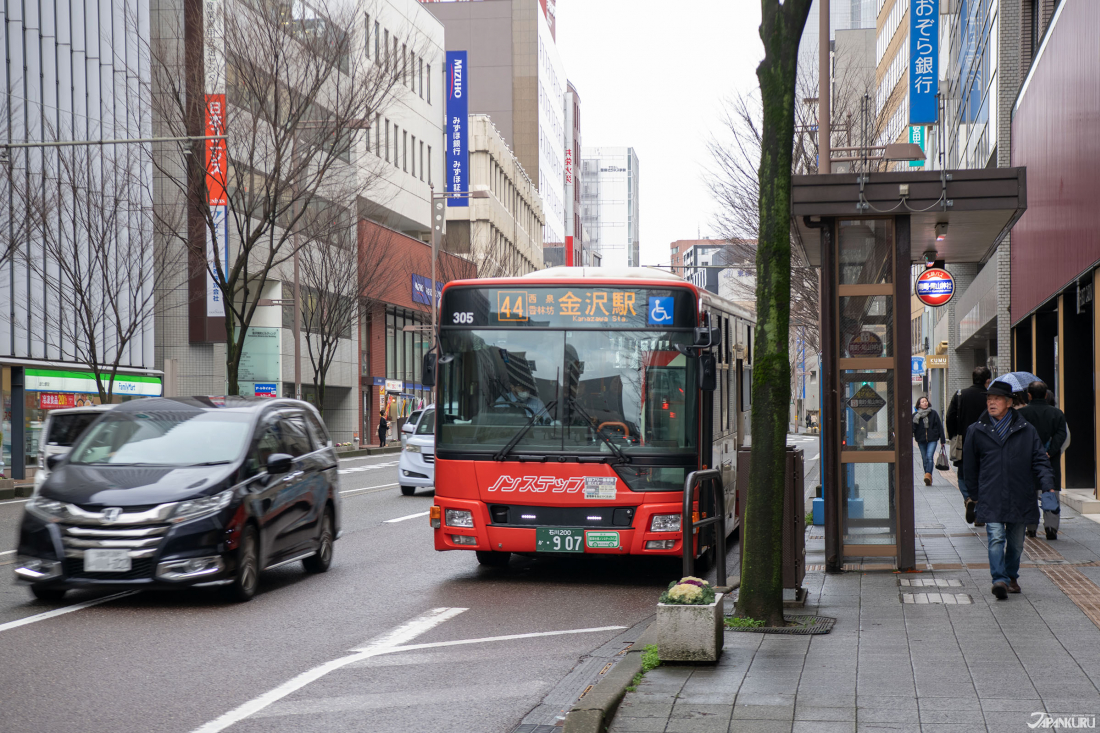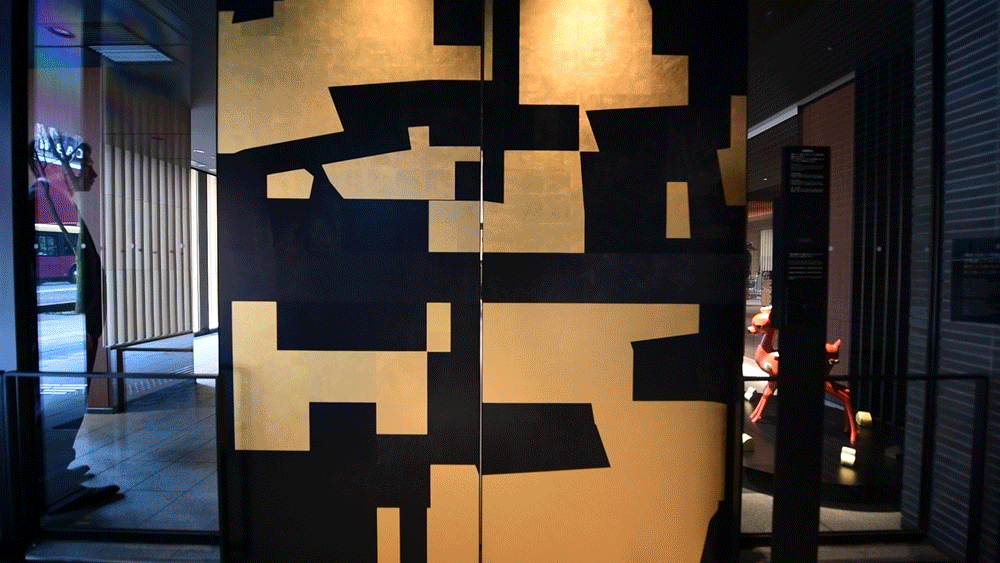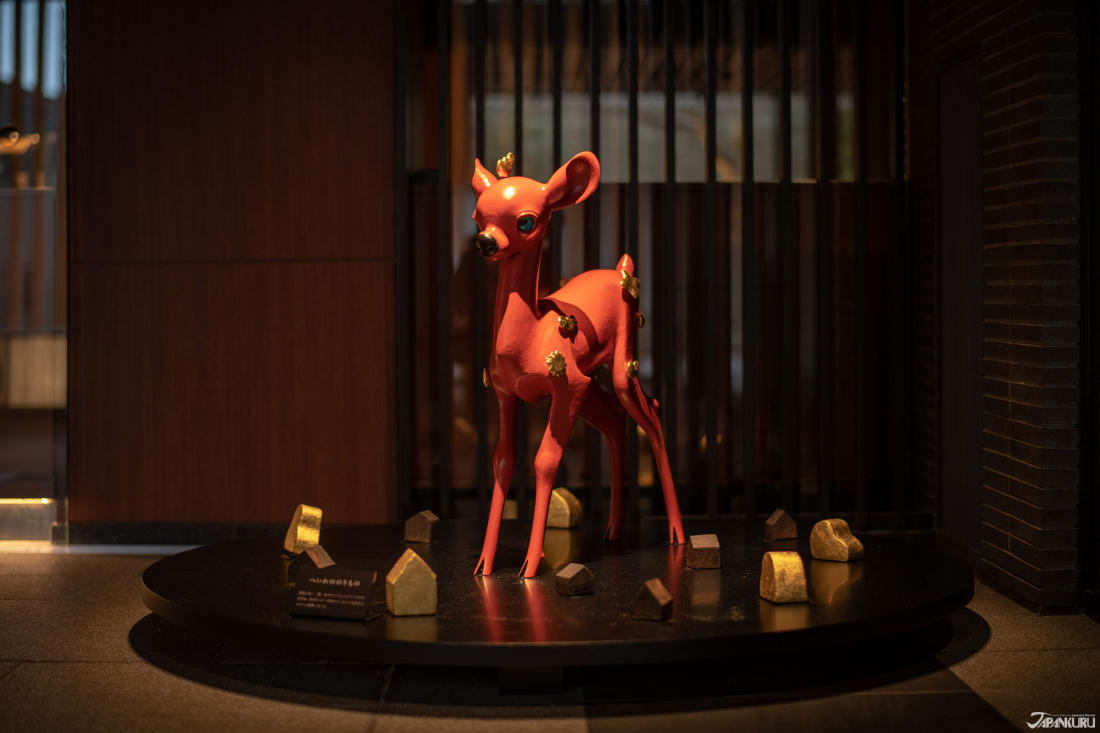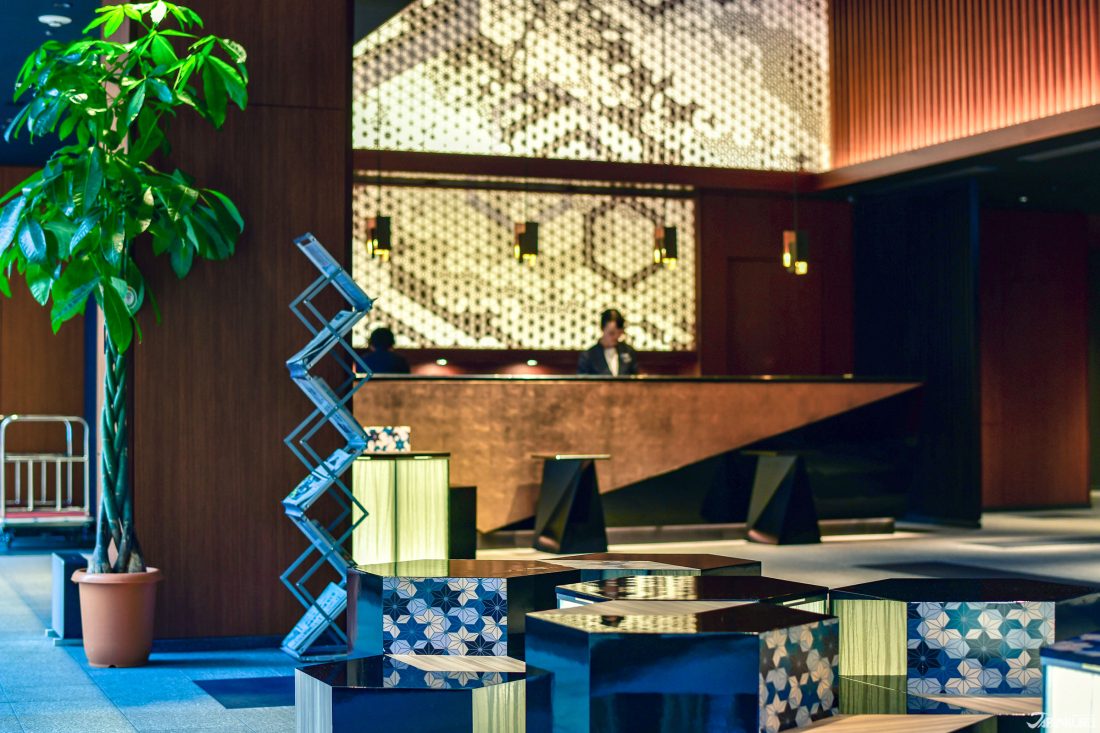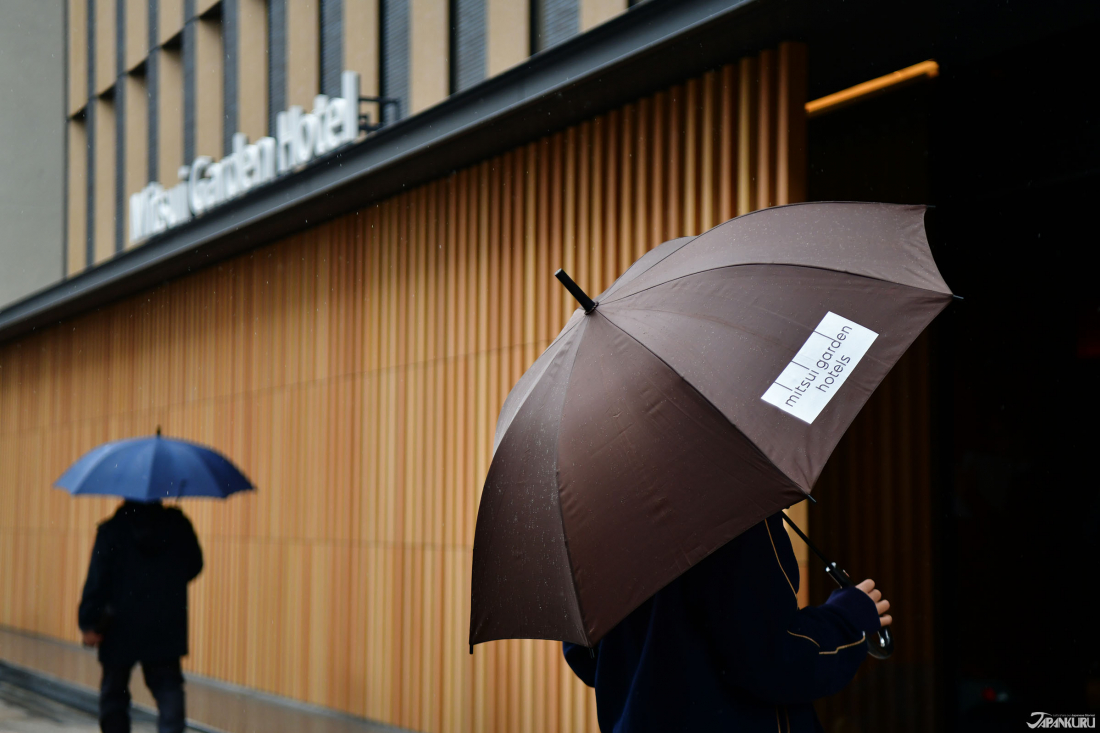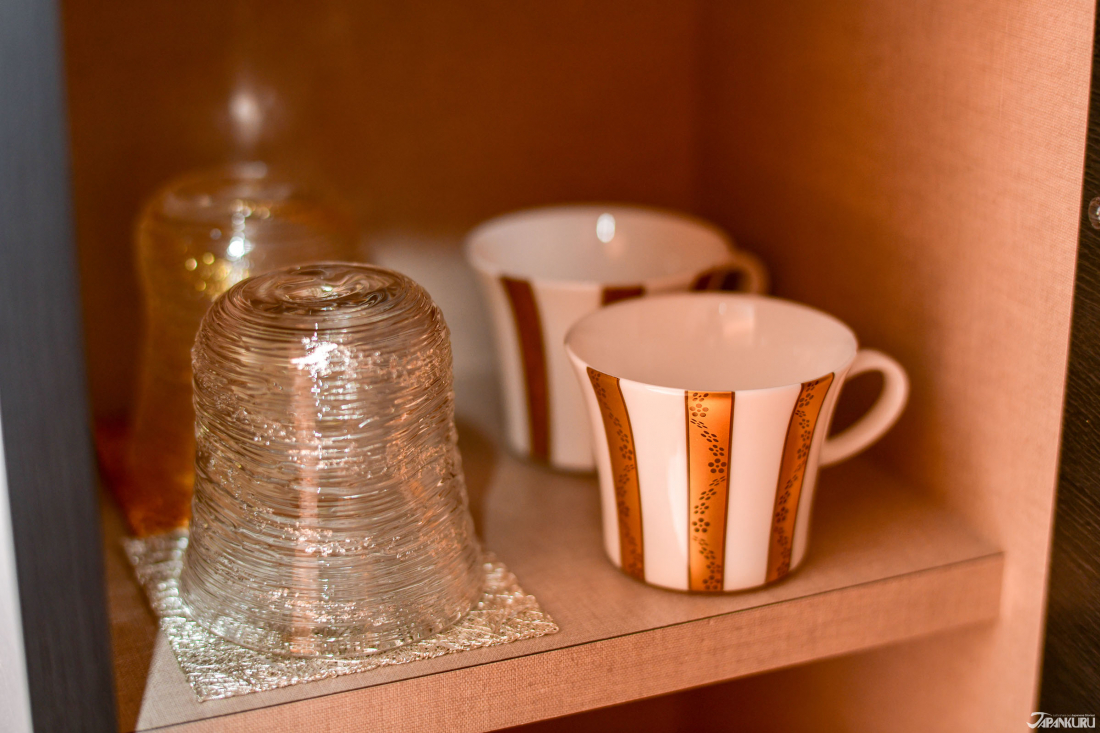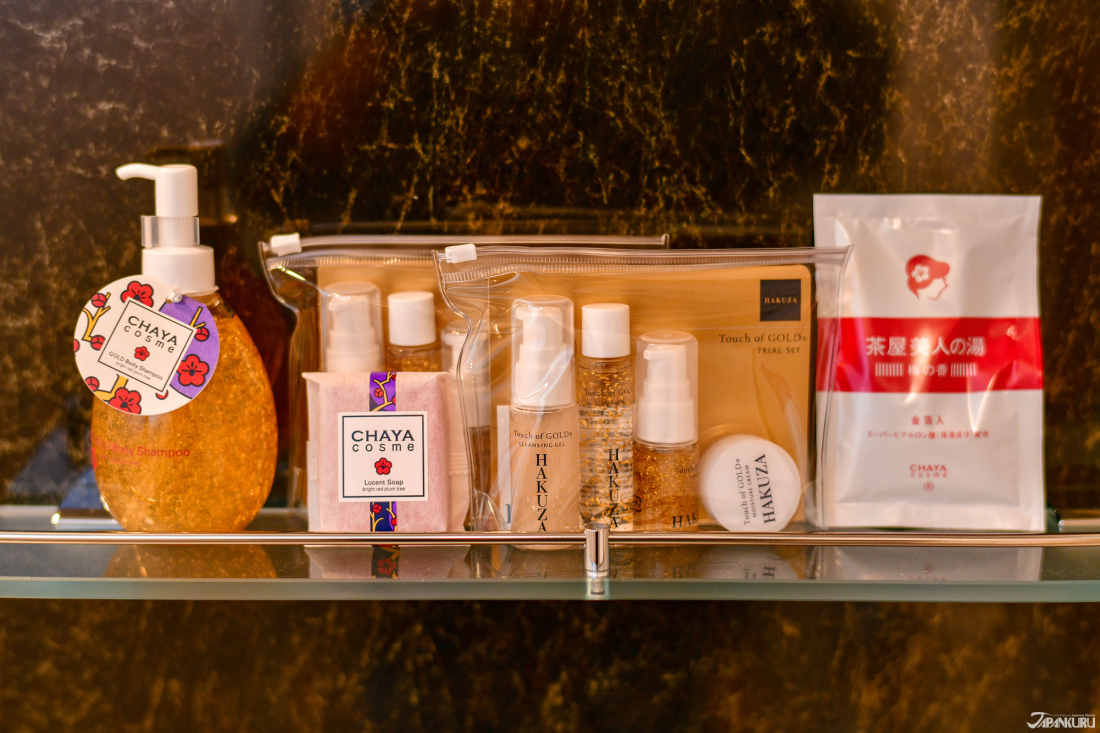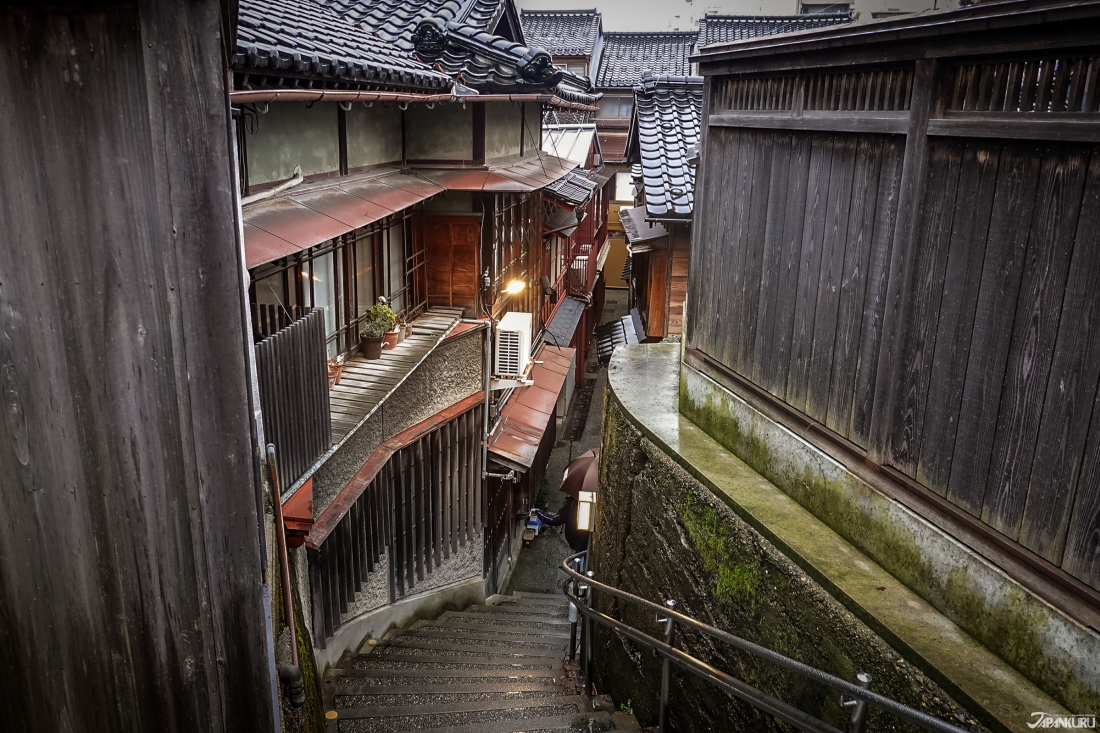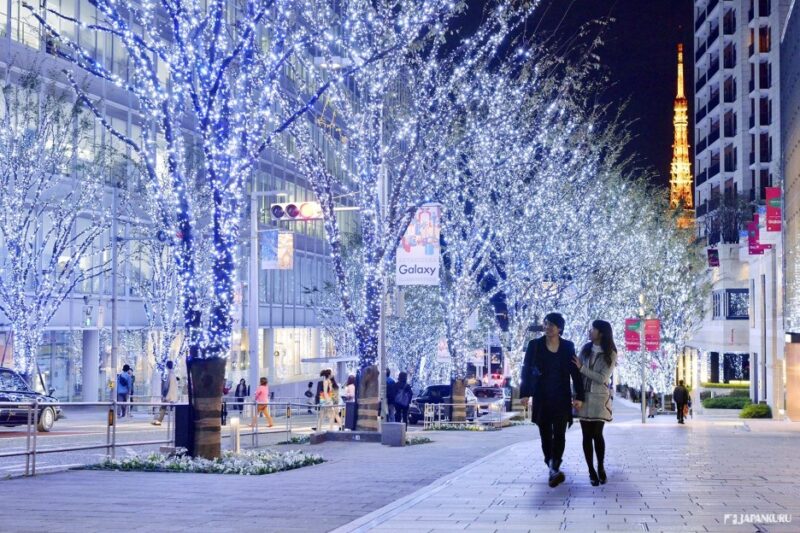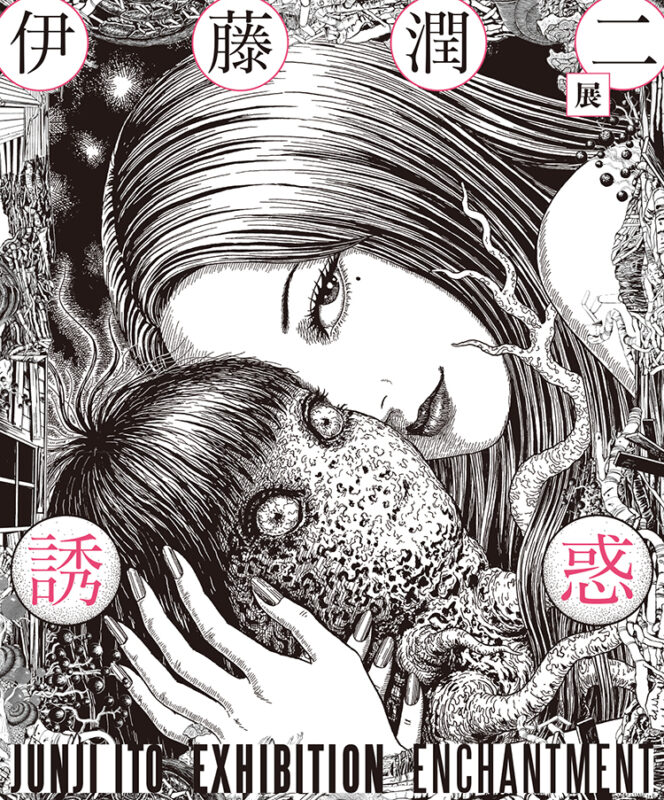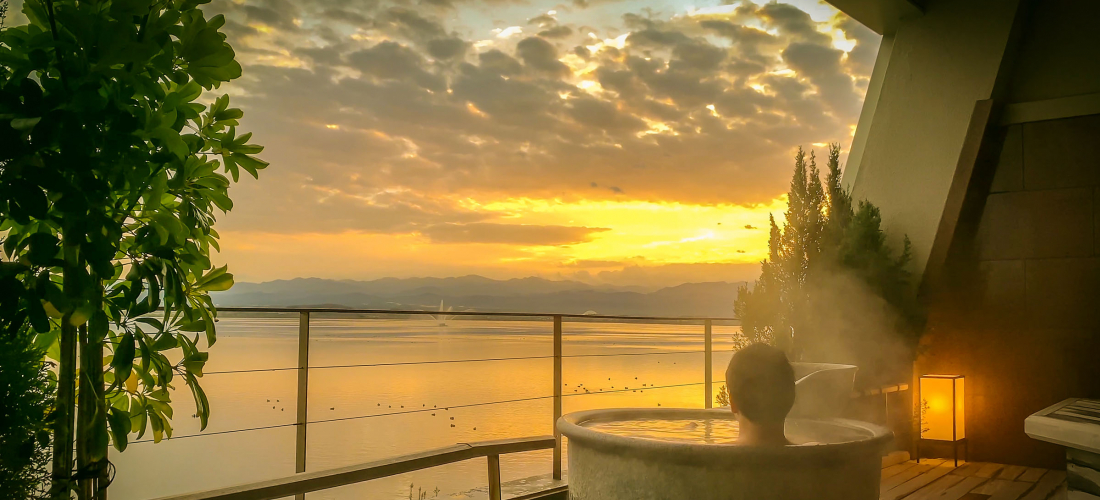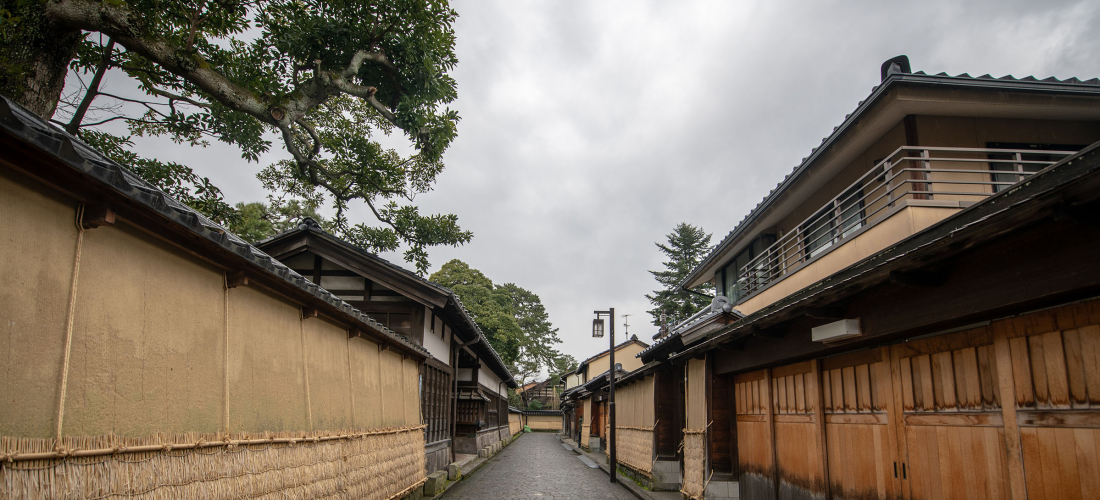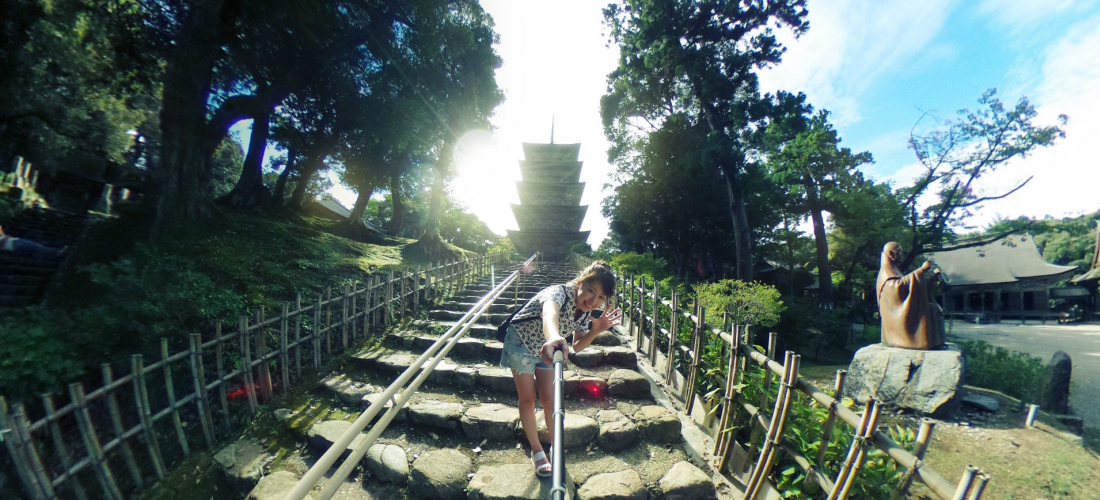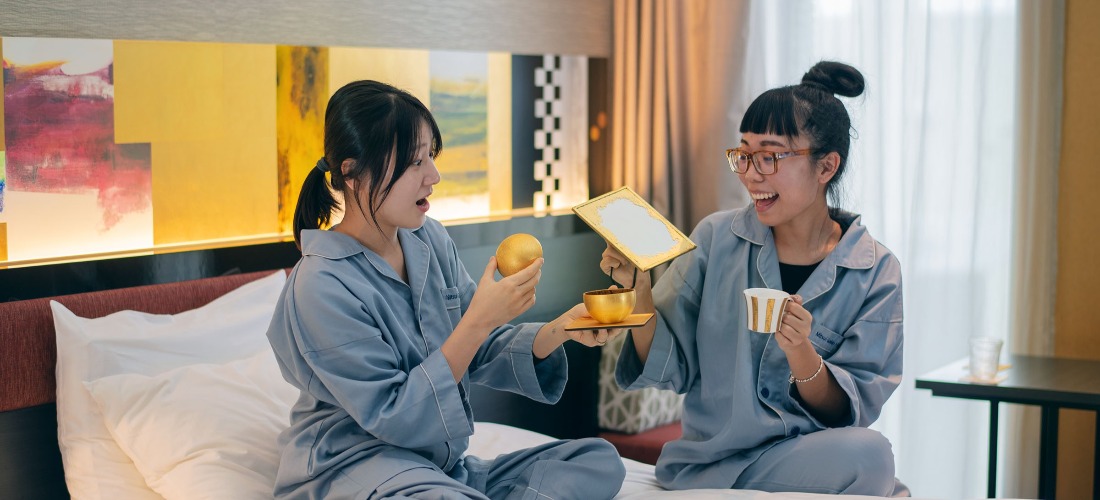
CONTENTS
Kanazawa is not only the capital of Ishikawa Prefecture but also the economic and cultural center of Hokuriku (Ishikawa, Toyama, and Fukui). In the 17th and 19th centuries, Kanazawa was well under the control of the powerful feudal Kaga Domain, and the well-established Kanazawa was never affected by war or major natural disasters. Thus Kanazawa kept the complete heritage and traditional craft culture all these years.
But Kanazawa, which is also known for it being one of Japan's rainy cities, has a saying, "You can forget to bring your lunch, but don't forget your umbrella." Which can only give you an idea of how much it rains.
This time, JAPANKURU will bring everyone to the rainy Kanazawa to find a place to hide (from the rain) – Mitsui Garden Hotel Kanazawa.
The chain hotel Mitsui Garden series is very well known to Japanese people. Comfortable and spacious are always a priority for those visiting Japan which is why this hotel is a popular choice among foreigners, especially Westerners. The hotel is also not far from JR Kanazawa station which works well in the sense that Kanazawa rains a lot. Not only is it easy to get to from Kanazawa Station, but it is also within a 10-minute walk to Kanazawa's largest fresh food market Omicho Market.
Recently we have visited many different Mitsui Garden Hotels around Japan, and each are different in their own way. Each of the rooms and interior is decorated with art and color schemes that combine the local characteristics. Mitsui Garden Hotel Kanazawa's particular scheme is that of Edo and Kanazawa's famous gold leaf.
How to Get to Mitsui Garden Hotel Kanazawa?
◆Walk: The distance between Mitsui Garden Hotel Kanazawa and JR Kanazawa Station is about 1/2 mile (1km), and it takes nearly 20 minutes on foot.
◆Bus: From Kanazawa Station get on at No. 8 stop, get off at Minamicho・Oyama Shrine stop. The bus stop is right in front of the hotel.
◆Taxi: You can get there from Kanazawa Station within 10 minutes for less than 1000 yen.
Hotel Lobby Full of Kanazawa Style
As mentioned above, the interior design of the Mitsui Garden series will vary on the local culture, and Mitsui Garden Hotel Kanazawa is decorated with gold leaf to give you the fullness of the Kanazawa style. There are many works related to Kanazawa to be seen here.
As soon as you walk into the hotel lobby, the calm color and the wooden aroma bring out the overall low-key and gorgeous texture. The lobby is truly beautiful. Since Kanazawa does rain so much, if you go to the front counter you can borrow an umbrella from the hotel for free.
Room Type 1: Hakuza Gold Leaf Concept Room
One of Kanazawa's representatives, gold leaf, has its own concept suite at the hotel known as the Hakuza Gold Leaf Room.
As the name implies, this is a suite with a gold leaf concept. All around the room is gold leaf/gold leaf color scheme; wallpaper, glasses and mugs, the vanity mirror, small utensils, etc. It doesn't stop there though, only in the gold leaf room will you be provided with gold leaf toiletries. The brand of the toiletries is a famous gold leaf brand in Kanazawa by the name of HAKUZA. You are of course able to take them home with you! In addition to that, there is a pod coffee machine in the room, which is a nice plus for coffee drinkers.
Room Type 2: Superior Twin Room
The regular rooms are just as beautiful and comfortable. Rather than taking the gold leaf concept, their regular rooms take on the traditional craftsmanship of Kanazawa. It is worth mentioning that the beds have an original Mitsui Garden pillow that super comfortable and made to help those who use it get a better nights sleep. Amenities are of course included, just not the same as the ones you will find in the Hakuza Gold Leaf rooms.
Public Bath with a View of the City
There is a large Japanese bathhouse on the 13F, one for women and one for men, that is free for those staying at the hotel. Due to the floor-to-ceiling windows face the Kanazawa Castle Park, there are no tall buildings in the way giving you an endless view. It is particularly beautiful in the morning where you can see the sunrise shining over the park. The night view is also something to enjoy.
They get the water from one of Japan's leading radium hot springs, Tochiomata Onsen. The radium minerals are said to be primarily effective in activating better blood flow, improving the metabolism, and boosts the body's immunity system.
◆Opening hours: 6am~9am / 3pm~1am (following day)
Kanazawa Style Breakfast
The breakfast here offers many views of Ishikawa Prefecture, from the produce included in the food to the traditional Kutani porcelain the food is served in. The breakfast is primarily a Japanese style breakfast, but the food offered is very varied. There are some dishes that are a must try like Kanazawa's famous "oden" (おでん), which is a one-pot dish that consists of many ingredients such as boiled eggs, konjac, Japanese radish (daikon), and more. Along with "shabu-shabu" (しゃぶしゃぶ), that is served with famous Ishikawa pork.
Kanazawa has a unique story of its own too, and we think Mitsui Garden Hotel Kanazawa does its best to incorporate that.
Location is also super important when it comes to deciding a hotel, so below we will mention a few of Kanazawa's famous tourist sights and what is close to the hotel.
◆Mitsui Garden Hotel Kanazawa
Google Maps
Check-in 3pm / Check-out 11am
💻Official website (ENG)
Here are some of the main attractions that are within walking distance 30 minutes from Mitsui Garden Hotel Kanazawa.
Omicho Market (近江町市場)
Kazue-machi Chaya District (主計町茶屋街)
Kenroku-en (兼六園)
21st Century Museum of Contemporary Art
Be sure to look at JAPANKURU🐶 for more exciting articles every day!!
Or add us on Instagram and Facebook to share your Japanese pictures💖🗾
Details
NAME:Mitsui Garden Hotel Kanazawa
MAP
1-22 Kamitsutsumi-cho, Kanazawa, Ishikawa
ACCESS:Kanazawa Station
CONTACT TEL:076-263-5531
COMMENT
FEATURED MEDIA
VIEW MORE 
A New Tokyo Animal Destination: Relax & Learn About the World’s Animals in Japan
#pr #japankuru #anitouch #anitouchtokyodome #capybara #capybaracafe #animalcafe #tokyotrip #japantrip #카피바라 #애니터치 #아이와가볼만한곳 #도쿄여행 #가족여행 #東京旅遊 #東京親子景點 #日本動物互動體驗 #水豚泡澡 #東京巨蛋城 #เที่ยวญี่ปุ่น2025 #ที่เที่ยวครอบครัว #สวนสัตว์ในร่ม #TokyoDomeCity #anitouchtokyodome

Shohei Ohtani Collab Developed Products & Other Japanese Drugstore Recommendations From Kowa
#pr #japankuru
#kowa #syncronkowa #japanshopping #preworkout #postworkout #tokyoshopping #japantrip #일본쇼핑 #일본이온음료 #오타니 #오타니쇼헤이 #코와 #興和 #日本必買 #日本旅遊 #運動補充能量 #運動飲品 #ช้อปปิ้งญี่ปุ่น #เครื่องดื่มออกกำลังกาย #นักกีฬา #ผลิตภัณฑ์ญี่ปุ่น #อาหารเสริมญี่ปุ่น

도쿄 근교 당일치기 여행 추천! 작은 에도라 불리는 ‘가와고에’
세이부 ‘가와고에 패스(디지털)’ 하나면 편리하게 이동 + 가성비까지 완벽하게! 필름카메라 감성 가득한 레트로 거리 길거리 먹방부터 귀여움 끝판왕 핫플&포토 스폿까지 총집합!
Looking for day trips from Tokyo? Try Kawagoe, AKA Little Edo!
Use the SEIBU KAWAGOE PASS (Digital) for easy, affordable transportation!
Check out the historic streets of Kawagoe for some great street food and plenty of picturesque retro photo ops.
#pr #japankuru #도쿄근교여행 #가와고에 #가와고에패스 #세이부패스 #기모노체험 #가와고에여행 #도쿄여행코스 #도쿄근교당일치기 #세이부가와고에패스
#tokyotrip #kawagoe #tokyodaytrip #seibukawagoepass #kimono #japantrip

Hirakata Park, Osaka: Enjoy the Classic Japanese Theme Park Experience!
#pr #japankuru #hirakatapark #amusementpark #japantrip #osakatrip #familytrip #rollercoaster #retrôvibes #枚方公園 #大阪旅遊 #關西私房景點 #日本親子旅行 #日本遊樂園 #木造雲霄飛車 #히라카타파크 #สวนสนุกฮิราคาตะพาร์ค

🍵Love Matcha? Upgrade Your Matcha Experience With Tsujiri!
・160년 전통 일본 말차 브랜드 츠지리에서 말차 덕후들이 픽한 인기템만 골라봤어요
・抹茶控的天堂!甜點、餅乾、飲品一次滿足,連伴手禮都幫你列好清單了
・ส่องมัทฉะสุดฮิต พร้อมพาเที่ยวร้านดังในอุจิ เกียวโต
#pr #japankuru #matcha #matchalover #uji #kyoto #japantrip #ujimatcha #matchalatte #matchasweets #tsujiri #말차 #말차덕후 #츠지리 #교토여행 #말차라떼 #辻利抹茶 #抹茶控 #日本抹茶 #宇治 #宇治抹茶 #日本伴手禮 #抹茶拿鐵 #抹茶甜點 #มัทฉะ #ของฝากญี่ปุ่น #ชาเขียวญี่ปุ่น #ซึจิริ #เกียวโต

・What Is Nenaito? And How Does This Sleep Care Supplement Work?
・你的睡眠保健品——認識「睡眠茶氨酸錠」
・수면 케어 서플리먼트 ‘네나이토’란?
・ผลิตภัณฑ์เสริมอาหารดูแลการนอน “Nenaito(ネナイト)” คืออะไร?
#pr #japankuru #sleepcare #japanshopping #nenaito #sleepsupplement #asahi #睡眠茶氨酸錠 #睡眠保健 #朝日 #l茶胺酸 #日本藥妝 #日本必買 #일본쇼핑 #수면 #건강하자 #네나이토 #일본영양제 #อาหารเสริมญี่ปุ่น #ช้อปปิ้งญี่ปุ่น #ร้านขายยาญี่ปุ่น #ดูแลตัวเองก่อนนอน #อาซาฮิ

Japanese Drugstore Must-Buys! Essential Items from Hisamitsu® Pharmaceutical
#PR #japankuru #hisamitsu #salonpas #feitas #hisamitsupharmaceutical #japanshopping #tokyoshopping #traveltips #japanhaul #japantrip #japantravel

Whether you grew up with Dragon Ball or you just fell in love with Dragon Ball DAIMA, you'll like the newest JINS collab. Shop this limited-edition Dragon Ball accessory collection to find some of the best Dragon Ball merchandise in Japan!
>> Find out more at Japankuru.com! (link in bio)
#japankuru #dragonball #dragonballdaima #animecollab #japanshopping #jins #japaneseglasses #japantravel #animemerch #pr

This month, Japankuru teamed up with @official_korekoko to invite three influencers (originally from Thailand, China, and Taiwan) on a trip to Yokohama. Check out the article (in Chinese) on Japankuru.com for all of their travel tips and photography hints - and look forward to more cool collaborations coming soon!
【橫濱夜散策 x 教你怎麼拍出網美照 📸✨】
每次來日本玩,是不是都會先找旅日網紅的推薦清單?
這次,我們邀請擁有日本豐富旅遊經驗的🇹🇭泰國、🇨🇳中國、🇹🇼台灣網紅,帶你走進夜晚的橫濱!從玩樂路線到拍照技巧,教你怎麼拍出最美的夜景照。那些熟悉的景點,換個視角說不定會有新發現~快跟他們一起出發吧!
#japankuru #橫濱紅磚倉庫 #汽車道 #中華街 #yokohama #japankuru #橫濱紅磚倉庫 #汽車道 #中華街 #yokohama #yokohamaredbrickwarehouse #yokohamachinatown

If you’re a fan of Vivienne Westwood's Japanese designs, and you’re looking forward to shopping in Harajuku this summer, we’ve got important news for you. Vivienne Westwood RED LABEL Laforet Harajuku is now closed for renovations - but the grand reopening is scheduled for July!
>> Find out more at Japankuru.com! (link in bio)
#japankuru #viviennewestwood #harajuku #omotesando #viviennewestwoodredlabel #viviennewestwoodjapan #비비안웨스트우드 #오모테산도 #하라주쿠 #日本購物 #薇薇安魏斯伍德 #日本時尚 #原宿 #表參道 #japantrip #japanshopping #pr

Ready to see TeamLab in Kyoto!? At TeamLab Biovortex Kyoto, the collective is taking their acclaimed immersive art and bringing it to Japan's ancient capital. We can't wait to see it for ourselves this autumn!
>> Find out more at Japankuru.com! (link in bio)
#japankuru #teamlab #teamlabbiovortex #kyoto #kyototrip #japantravel #artnews
Photos courtesy of teamLab, Exhibition view of teamLab Biovortex Kyoto, 2025, Kyoto ® teamLab, courtesy Pace Gallery

Japanese Makeup Shopping • A Trip to Kamakura & Enoshima With Canmake’s Cool-Toned Summer Makeup
#pr #canmake #enoshima #enoden #에노시마 #캔메이크 #japanesemakeup #japanesecosmetics

⚔️The Robot Restaurant is gone, but the Samurai Restaurant is here to take its place. Check it out, and don't forget your coupon!
🍣신주쿠의 명소 로봇 레스토랑이 사무라이 레스토랑으로 부활! 절찬 쿠폰 발급중
💃18歲以上才能入場的歌舞秀,和你想的不一樣!拿好優惠券去看看~
#tokyo #shinjuku #samurairestaurant #robotrestaurant #tokyotrip #도쿄여행 #신주쿠 #사무라이레스토랑 #이색체험 #할인이벤트 #歌舞伎町 #東京景點 #武士餐廳 #日本表演 #日本文化體驗 #japankuru #japantrip #japantravel #japanlovers #japan_of_insta

Japanese appliance & electronics shopping with our KOJIMA x BicCamera coupon!
用JAPANKURU的KOJIMA x BicCamera優惠券買這些正好❤️
코지마 x 빅 카메라 쿠폰으로 일본 가전 제품 쇼핑하기
#pr #japankuru #japanshopping #kojima #biccamera #japaneseskincare #yaman #dji #osmopocket3 #skincaredevice #日本購物 #美容儀 #相機 #雅萌 #日本家電 #일본여행 #면세 #여행꿀팁 #일본쇼핑리스트 #쿠폰 #일본쇼핑 #일본브랜드 #할인 #코지마 #빅카메라 #japankurucoupon

